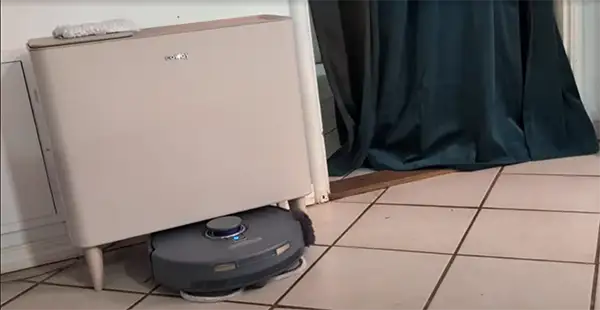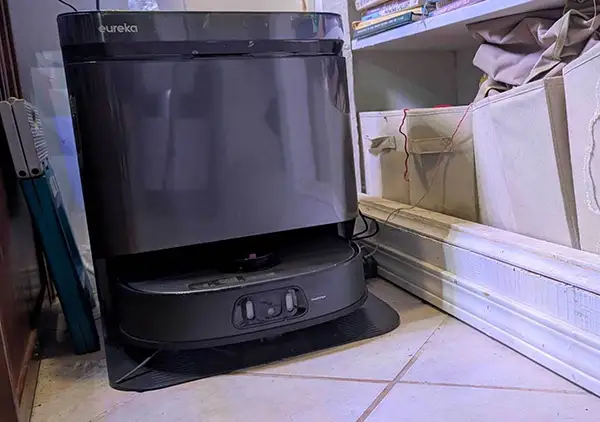Home Safety &Tech
The Truth About What Robot Vacuums Can and Can’t Handle

What Robot Vacuums Do: Expectations vs. Reality
Robot vacuums promise convenience, automation, and cleaner floors with minimal effort. These smart devices appear ready to revolutionize housekeeping. However, expectations rarely align perfectly with reality. Understanding what robot vacuums do and don’t do is crucial before investing in one.
Initial Expectations From a Robot Vacuum
Most buyers assume a robot vacuum will keep their floors spotless every hour. Early marketing encouraged this belief with claims of full automation. The image of a 24/7 digital janitor was hard to resist.
In reality, using a robot vacuum still requires planning and maintenance. You’ll do less daily sweeping, but not zero work. A robot vacuum eases your routine but doesn’t eliminate floor chores. You’ll soon learn what robot vacuums do well—and where they fall short.
Prepare to Rearrange Furniture Often
Robot vacuums struggle with tight spaces and cluttered layouts. To function properly, they need clear paths to navigate. This means rearranging your furniture or decluttering your floor.
Unlike a human cleaner, robots can’t lift or move things. They bounce off table legs, lamps, and chair feet. Instead of skimming close to furniture, they usually stop inches short. Thus, you may need to change your floor setup to maximize cleaning.

Courtesy of Amanda Blum
If you enjoy keeping laundry piles or potted plants nearby, you’ll need to relocate them. Cords pose specific problems. Most users elevate cords or secure them to walls to avoid tangling. Clean floors equal fewer obstacles and smoother robot operation.
I found Roborock 10R impressive. This model uses AI-powered cameras to access tighter spots better than most others.
Courtesy of Amanda Blum
What Robot Vacuums Do: Miss Dirt Near the Dock
One ironic drawback is how dirty it gets around a robot’s dock. Robot vacuums dock themselves for charging and emptying. But this area typically becomes the dirtiest place in the home.
Many docks sit in corners or against walls. Since robots can’t fully clean around the base, grime builds up. Worse, the vacuum drags dust with it as it returns to dock. Dirt often settles right in front of the charging base.
Premium models like the 3i S10 Ultra do slightly better near walls. However, most still miss edges, corners, and baseboards. Even models with dusting pads—like the Narwal Freo Z—only sweep, not scrub.
Manual Cleaning Still Required in Narrow Spots
If you want spotless baseboards and tight corners, expect to intervene. Robots cannot navigate narrow thresholds or low-clearance spaces.
Make sure to allow 1.5 times the vacuum’s width for entry. Also ensure there’s enough vertical clearance for the robot to fit. Even then, some spaces will remain unreachable.
Because of this, I keep a stick vacuum around. It helps clean corners, furniture bases, and edges where robots struggle.
What Robot Vacuums Do: Handle Light Debris Only
These robots handle dust, small particles, and cereal bits well. But for larger debris, they fall short. Think mulch, food scraps, toy fluff, or loose coins—these items clog rollers.
You’ll need to pre-sweep or remove large objects manually. Otherwise, you’ll spend time fishing them out from your robot. This may reduce the convenience robot vacuums promise.
However, the 3i S10 Ultra stood out here. It picked up larger items more efficiently than any model I’ve previously tested.
Built-In Mops Don’t Replace Real Mopping
Many modern robots include mops. These robots vacuum and mop simultaneously, automating two chores at once. Some docking stations even sanitize and refill the mop for you.
But again, expectations must be realistic. Robot mops are best for surface cleaning—not deep stains. If you spill juice or see dried mud, the robot won’t scrub it clean.
These robots don’t apply real pressure on floors. They rely on repeated passes to make progress. This wastes battery and water, and doesn’t guarantee spotless results.
I keep a standard mop nearby for deep cleaning. I use the robot to maintain cleanliness between major cleanups. If mopping is your priority, Roborock’s vibrating mop models outperform those with spinning heads.
The S8 MaxV Ultra remains one of my top recommendations for hybrid models.
Robot Vacuums Are Often Slow
Robot vacuums are convenient but not fast. If your child spills juice, grabbing a towel is quicker than waiting for the robot.
Yes, voice assistants like Google or Alexa can trigger cleaning. But the robot needs time to orient, load water, and navigate to the zone.
Roborock’s Pin-and-Go feature is a great shortcut. It lets you drop a pin on the map and direct the vacuum immediately.
Still, expect a delay. It may take five to ten minutes before the robot begins cleaning the right spot. For quick spills, manual tools remain superior.
That’s why I appreciate the Narwal S20. It’s a quick-grab mop I use for fast, effective cleanup.
Robot Vacuums Still Need Your Help
Even high-end robot vacuums require regular intervention. They can’t operate completely hands-free. Clogs happen often. Loose items jam their brushes and rollers.
You’ll need to rescue them when they get stuck on cords or lost behind furniture. Occasionally, they just stop mid-cleaning. You must reset them or return them to their dock.
Also, don’t forget about cleaning the mopping system and changing the water tank. Even intelligent robots need routine care to function well.
What Robot Vacuums Do Well
To summarize what robot vacuums do successfully:
- Vacuum dust and small debris efficiently
- Maintain cleanliness with scheduled runs
- Handle light surface mopping
- Learn your space with AI-assisted mapping
These strengths make them excellent assistants—not replacements for deep cleaning tools.
What Robot Vacuums Don’t Do
Robot vacuums fall short in several areas:
- Clean corners or narrow gaps effectively
- Replace traditional mopping for deep stains
- Handle large, heavy debris
- Operate indefinitely without maintenance
Realistically, they complement—not replace—manual tools.
How to Maximize Your Robot Vacuum’s Potential
Follow these tips to make your robot more effective:
- Keep floors clear of cords and clutter
- Elevate furniture when possible
- Pre-sweep large debris
- Use mats for messy areas
- Clean the robot frequently
Treat it like a helper, not a miracle device.
Final Thoughts: Understanding What Robot Vacuums Do
Robot vacuums offer a smart solution for routine upkeep. However, they demand effort, setup, and occasional rescue. Learning what robot vacuums do and don’t do ensures realistic expectations.
If you want a cleaner home with less effort, robot vacuums can help. But don’t retire your mop or stick vacuum yet. Instead, build a hybrid system that combines automation with manual control.
Choose a model that fits your home’s layout and your cleaning priorities. For best results, pair advanced features with thoughtful preparation.
Stay informed with smart home trends, robotic cleaning guides, and expert product reviews tailored to your lifestyle on this website.

